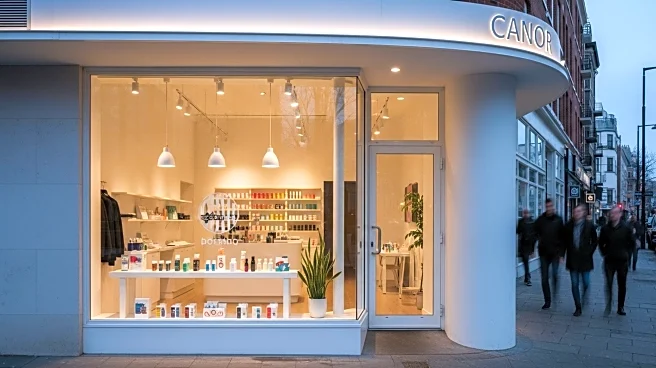What's Happening?
Retailers are increasingly focusing on enhancing the physical retail experience to build brand loyalty and community engagement. According to The State of Fashion 2025 Report by BoF and McKinsey & Co., in-store sales growth is expected to slow to 1-2% across key markets, prompting retailers to create value beyond just the product. Consumers are seeking meaningful, personalized experiences that align with their values, leading brands to rethink the purpose of physical stores. This includes investing in knowledgeable sales associates who embody brand values and using storytelling to convey product quality and brand history. The report highlights the importance of creating emotional connections with consumers to transform transactions into meaningful interactions.
Why It's Important?
The emphasis on physical retail strategies reflects a shift in consumer expectations and the need for brands to differentiate themselves in a competitive market. As consumers become more discerning, retailers must offer experiences that resonate on a personal level, fostering loyalty and repeat business. The human element in retail, such as knowledgeable staff and personalized service, is crucial in conveying brand values and building trust. This approach not only enhances the shopping experience but also strengthens the emotional connection between consumers and brands, which is essential for long-term success. The focus on storytelling and community engagement can help brands stand out and attract loyal customers.
Beyond the Headlines
The evolving retail landscape presents opportunities for brands to innovate and redefine the role of physical stores. By creating immersive and experiential environments, retailers can offer unique experiences that cannot be replicated online. This approach can lead to deeper consumer engagement and a stronger sense of community, ultimately driving brand loyalty. Additionally, the focus on personalized interactions and emotional connections highlights the importance of understanding consumer needs and preferences. As the retail industry adapts to these changes, brands that successfully integrate these strategies will be better positioned to thrive in the future.










